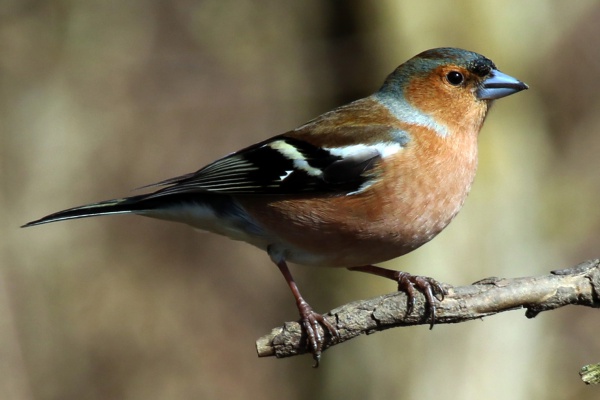Facts About Common chaffinch
The common chaffinch, often referred to simply as the chaffinch, is a small bird within the finch family that presents a captivating appearance. Male chaffinches are particularly striking, featuring a blue-grey cap and rust-red underparts, while females exhibit a more subdued coloration. Both sexes, however, have distinctive white wing bars and white patches on the sides of their tails. A notable characteristic of the male chaffinch is its robust, melodic song, often delivered from high perches to attract a mate.
These birds are widespread, breeding across Europe, into the Palearctic region extending to Siberia, and even in northwestern Africa. They typically nest in the forks of trees, laying clutches of four to five eggs, and primarily feed their chicks caterpillars. Outside the breeding season, chaffinches form flocks and foraging on the ground for seeds. Some populations are partial migrants, relocating to warmer areas during winter when originating from colder regions.
Despite facing threats from various predators, including mammals and birds, the common chaffinch maintains a robust population and a broad range, leading to its classification as "Least Concern" by the International Union for Conservation of Nature (IUCN).
Scientifically described by Carl Linnaeus in 1758, the common chaffinch belongs to the Fringillidae family, known for its seed-eating habits, and is part of the Fringillinae subfamily. There are several subspecies of chaffinch, varying geographically.
These birds are found from Europe to temperate Asia, with distinct subspecies in regions such as the Azores, Canary Islands, and Madeira Islands. In areas with milder climates, chaffinches are non-migratory, but they vacate colder regions during winter. Outside of the breeding season, they form loose flocks and occasionally stray to eastern North America.
Chaffinches are generally monogamous during the breeding season. Females are responsible for constructing the nests, usually in the forks of trees. Their diet shifts to invertebrates, particularly caterpillars, to feed their chicks during breeding, while outside this period, they primarily consume seeds.
The common chaffinch faces natural enemies and parasites, such as Trichomonas gallinae, but is notably not targeted by the common cuckoo. With an estimated 130-240 million breeding pairs in Europe alone, the species thrives.
Historically, the common chaffinch was a favored caged songbird, often captured and sold for its melodic song. Although this practice has declined, in some European countries, male chaffinches still compete in events to showcase their vocal abilities.

 Montenegro
Montenegro